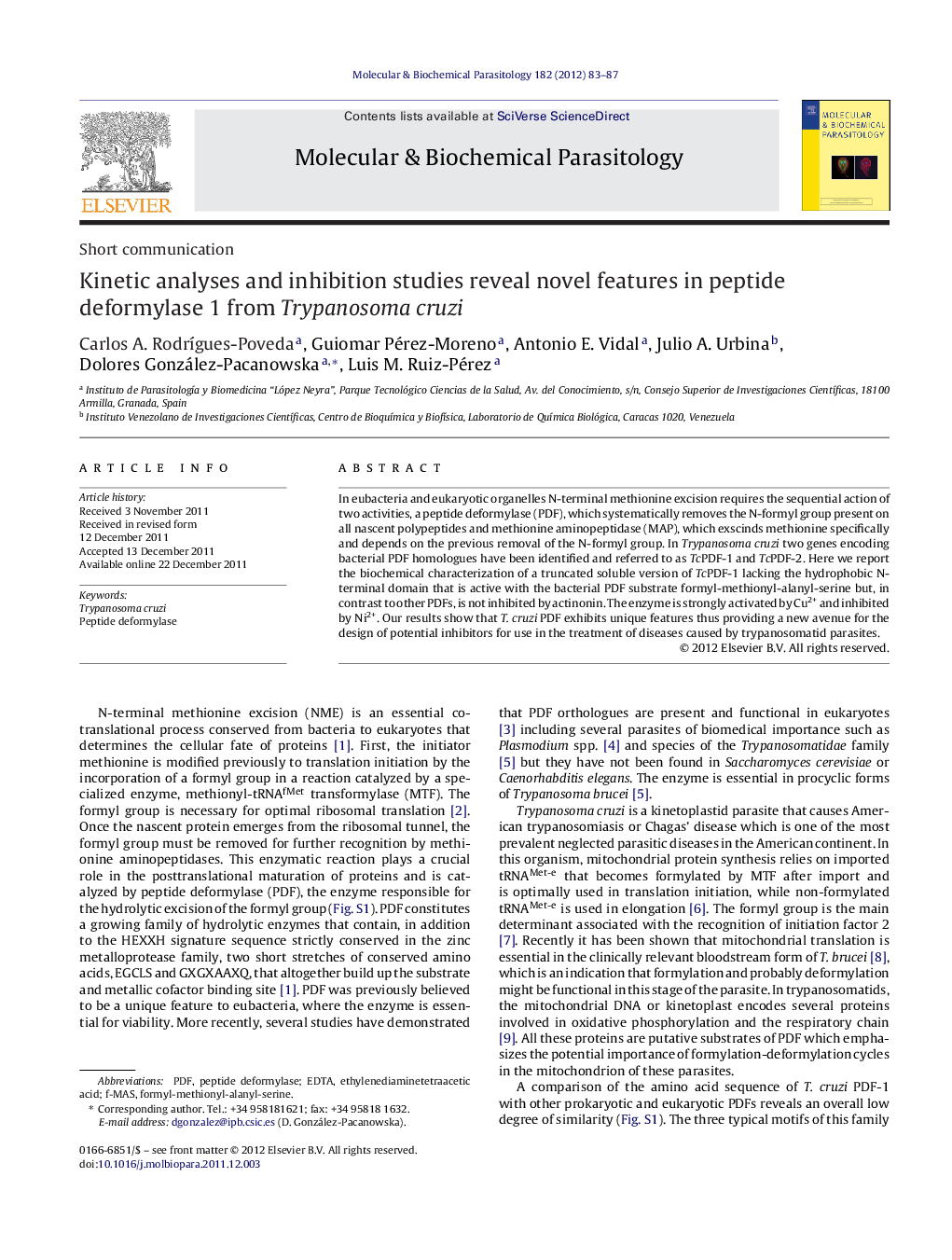| کد مقاله | کد نشریه | سال انتشار | مقاله انگلیسی | نسخه تمام متن |
|---|---|---|---|---|
| 2829849 | 1570655 | 2012 | 5 صفحه PDF | دانلود رایگان |

In eubacteria and eukaryotic organelles N-terminal methionine excision requires the sequential action of two activities, a peptide deformylase (PDF), which systematically removes the N-formyl group present on all nascent polypeptides and methionine aminopeptidase (MAP), which exscinds methionine specifically and depends on the previous removal of the N-formyl group. In Trypanosoma cruzi two genes encoding bacterial PDF homologues have been identified and referred to as TcPDF-1 and TcPDF-2. Here we report the biochemical characterization of a truncated soluble version of TcPDF-1 lacking the hydrophobic N-terminal domain that is active with the bacterial PDF substrate formyl-methionyl-alanyl-serine but, in contrast to other PDFs, is not inhibited by actinonin. The enzyme is strongly activated by Cu2+ and inhibited by Ni2+. Our results show that T. cruzi PDF exhibits unique features thus providing a new avenue for the design of potential inhibitors for use in the treatment of diseases caused by trypanosomatid parasites.
A truncated form of peptide deformylase-1 from Trypanosoma cruzi has been purified and characterized. The enzyme is insensitive to inhibition by actinonin and activated by Cu2+.Figure optionsDownload high-quality image (111 K)Download as PowerPoint slideHighlights
► Recombinant truncated PDF-1 of Trypanosoma cruzi was expressed and purified.
► PDF1 is active with f-MAS as substrate.
► Enzyme activity is inhibited by Ni2+ and activated by Cu2+ and chelating agents.
► TcPDF-1 is insensitive to inhibition by actinonin.
Journal: Molecular and Biochemical Parasitology - Volume 182, Issues 1–2, March–April 2012, Pages 83–87